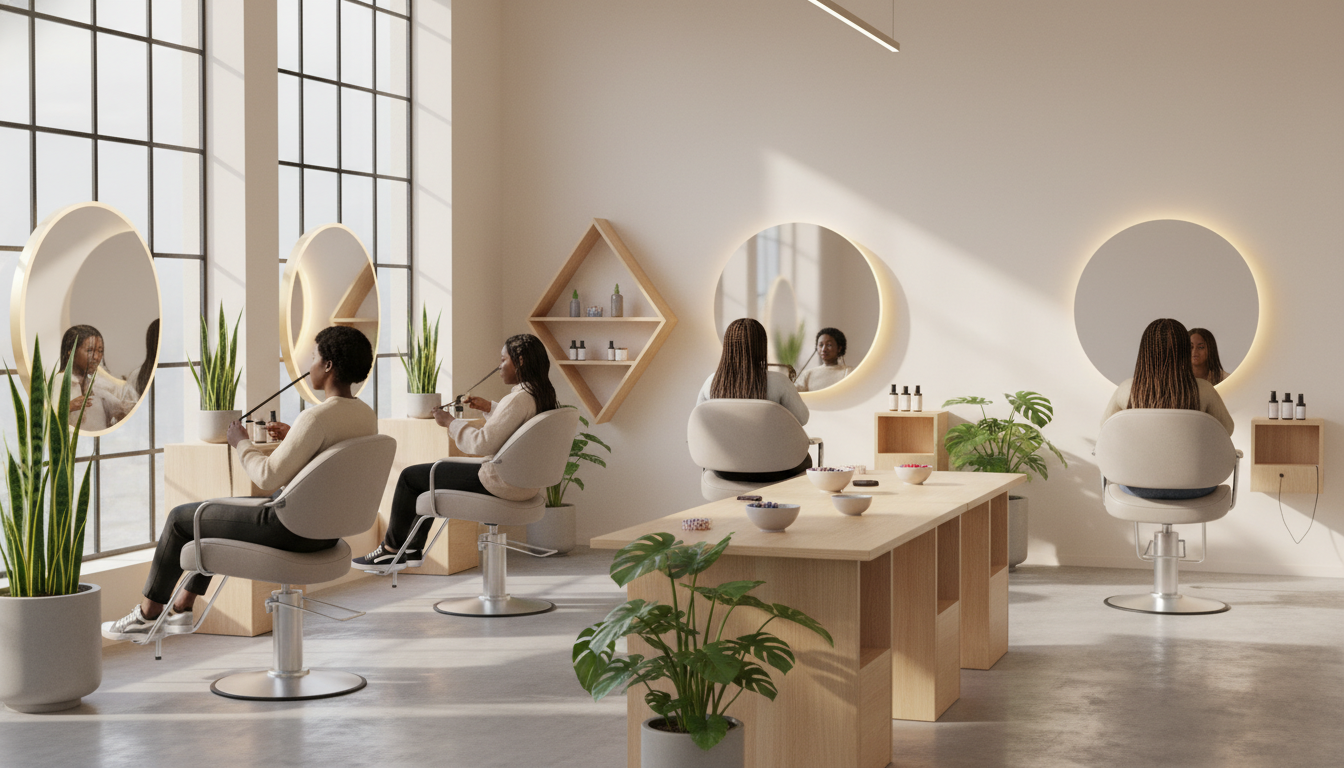What this guide answers
This article shows how to find high-quality African hair braiding near me and how to use CoopeAI to upload photos and generate realistic hairstyle variations. It combines cultural context, practical searching tactics, an actionable CoopeAI workflow, salon marketing recommendations, and technical tips for virtual try-on and privacy.
What is African hair braiding and why search for "African braids near me"
African hair braiding refers to braided styles rooted in African cultural traditions, including box braids, cornrows, Senegalese twists, Marley twists and faux locs. These styles vary by technique, required time and products; typical salon sessions take from 2 to 8 hours depending on size and extensions. Searching "African braids near me" targets local skilled braiders who understand texture, protective styling and extension types important for hair health.
Which braiding styles should I specify when searching locally
Name the style you want to improve match rates: box braids, cornrows, goddess braids, Senegalese twists, Marley twists, micro-braids, crochet braids, or faux locs. Each style has distinct time/cost profiles: micro/box braids often 4–8 hours, larger twists 2–4 hours, crochet/installed weaves 1–3 hours; prices vary by city and hair length. Ask salons for photos of their work, time estimates, materials (synthetic vs human hair) and aftercare instructions.

How to find reputable braiders fast using local search and social signals
Start with local listings: Google Maps, Yelp, and Instagram geotags and hashtags (e.g., #boxbraids, #cornrows + city). Evaluate: portfolio photos, client reviews, salon hygiene, braiding chair capacity, and pricing transparency. For businesses, structured data (LocalBusiness + Service schema) improves visibility—follow Google's guidance on LocalBusiness structured data to appear in map packs and rich results.
According to Google Developers Local Business documentation, adding structured data helps search engines extract business hours, services, and location for local queries. Use that to rank for "african hair braiding near me".
What is CoopeAI and how it fits into hairstyle discovery
CoopeAI is a client-facing virtual-try-on concept that lets users upload a photo and generate multiple braided hairstyle variations using image-conditional generative models. Typical features include hair segmentation, style templates (box braid, cornrow patterns, parting maps), color/extension preview, and adjustable density/length sliders. For salons and clients, CoopeAI shortens consultation time by converting client photos into a set of preview images the stylist can replicate or adapt.

How to use CoopeAI step-by-step to generate braided hairstyle options
- Prepare a clear, front-facing photo with natural lighting and hair in a neutral state (pulled back works). 2. Upload to CoopeAI and choose base hairstyle categories (box braids, cornrows, twists). 3. Adjust length, thickness, color (synthetic or human-hair look), and parting pattern; request variant previews. 4. Save and export a salon-ready pack: high-res reference images, suggested extension types, and estimated time.
Always confirm generated looks with a professional braider—AI previews are guides, not guaranteed results. For image-generation tech reference and capabilities, see OpenAI image guides on image editing and generation features: OpenAI Images Guide.
What privacy and consent considerations should users and salons observe
When uploading client photos, obtain explicit consent and store images securely; avoid retaining raw face photos beyond necessary processing. If CoopeAI or similar services store images, verify retention policies and data encryption. For apps that process hair segmentation and facial landmarks, follow industry privacy best practices and clearly present a photo data policy to clients.
How salons can use CoopeAI to convert more consultations into bookings
Integrate CoopeAI previews into booking flows and present 2–4 tailored looks during consultations to reduce decision friction. Offer a "virtual consult" service with generated preview + price/time estimate as a paid deposit to reduce no-shows. Track conversion metrics: preview-to-booking rate, average ticket, and client satisfaction. Use Instagram reels and before/after posts generated from approved preview images to showcase reproducible results.

Pricing, materials and quality signals clients should ask about
Ask whether the salon uses pre-stretched synthetic hair, premium Kanekalon/Yaky, or human hair extensions; each affects durability and cost. Request guarantees on loose ends, install neatness, and scalp health practices (no excessive tension). Typical U.S. pricing ranges (2024–2025 observations): $60–$300+ depending on style complexity and extensions—get a written estimate and aftercare instructions.
Cultural context and ethical considerations when seeking or offering African braid styles
African braiding techniques originate from centuries-old practices used to signal identity, status and community; respectful attribution and cultural awareness matter when non-Black stylists practice these techniques. When featuring braids commercially, credit cultural origins and ensure stylists maintain appropriate training in texture-specific care. For cultural history context see Smithsonian Museum and cultural writing on African hairstyles: Smithsonian Magazine search on hair and culture.
Practical checklist for users searching "african hair braiding near me"
- Use query variants: "box braids near me", "cornrows [city]", "braiding salon [zipcode]".
- Inspect portfolios and ask for full-session photos (not just staged shots).
- Confirm materials (synthetic vs human hair), time estimates, and pricing.
- Request an exported CoopeAI preview or reference photo set if available.
Technical note for developers: implementing virtual try-on and hair segmentation
Robust try-ons combine hair segmentation, parting detection, and conditional image generation or style-transfer models. MediaPipe and modern segmentation models can extract hair masks; generative backends use diffusion or GAN-based conditioning to synthesize realistic braids. For implementation guidance on developer tools and models, see Google MediaPipe documentation: MediaPipe and OpenAI image-generation docs above.
Actionable next steps for clients and salons to get started this week
Clients: capture a clear reference photo and search local listings + Instagram tags; request CoopeAI or similar previews. Salons: add LocalBusiness schema, publish portfolio case studies that link to virtual-try-on previews, and offer a documented virtual consult flow. Use booking deposits to reduce cancellations and measure preview-to-booking conversion within 30 days.
According to Google LocalBusiness guidance and modern image-generation tools, combining accurate local SEO with AI-driven previews can measurably increase booking conversions and client satisfaction in 2025. Implement privacy-first image handling and stylist verification to ensure quality and cultural respect.